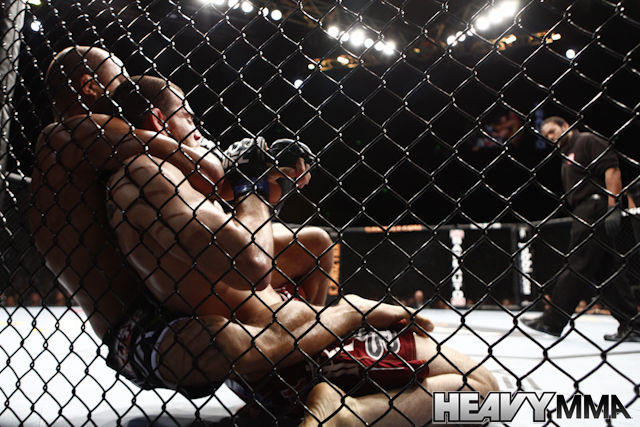
With Penn having the advantage in that grappling sequence, and scoring with the takedown as well, it’s hard for me to see where Fitch does enough work to get back to even, yet alone win the round. Even if you call their takedowns a wash, Penn’s dominant position and submission attempt scored more on my card than Fitch’s work from inside Penn’s guard.
Yet a lot of keen observers of this sport who I respect greatly think otherwise, showing another of the conundrums we encounter in judging fights.
First and foremost, judging fights is a subjective endeavor and will therefore never yield true consistency and indisputable results. We’ve seen enough close fights to know that different people score fights differently, and that will always be a part of the package.
Adding additional judges is a step I agree with, as five sets of eyes and scores provide a more complete and level interpretation of what took place, but brings us back to the lack of depth in the talent pool amongst judges. Bringing in two more judges could be very beneficial, but what if those officials are Cecil Peoples and Glen Trowbridge, two of the more infamous officials in the sport?
In all honesty, the 10-point must system and how rigidly judges stick to offering one of two scores (10-9 or 10-8) is the real culprit here, not the judges themselves. Though there are 10-10 rounds, judges are there to decide a winner, not call every close round a push.
While many pundits are arguing that Fitch deserved to win the fight, no one seems to be bringing up the fact that the lone judge who awarded the American Kickboxing Academy product the second round also delivered the only scorecard with a 10-9 round in the third.
To me, this is the perfect example of the challenges we’re facing right now, both in judging and the scrutiny of the position; people want to raise a fuss about every close decision, but get so caught up in their own arguments that they can’t see bigger, more salient issues before them.
If Round 3 was such a definitive 10-8 round, how come no one is questioning the official who scored it 10-9 for Fitch? It wouldn’t have changed the outcome of the fight, as that particular judge was the one who turned in a 29-28 for Fitch to begin with, but if people are going to say the judges got this wrong, look at the entire picture, not just the elements that pertain to your argument.
More importantly, recognize the difficulty in the argument you’re making to begin with; what makes your subjective take on the fight from the comfort of your living room or local watering hole better than that of an official sitting beside the cage in Sydney?
Just as we’ve seen countless fights where rounds receiving 10-9 scores were drastically different (Jackson-Machida anyone?), this fight is yet another example of how the interpretation of a fight varies and the structure of the 10-point must system is very limiting.
Giving Fitch a 10-9 in a close second frame makes what Penn did in the first stand out even more. While the rounds are scored independently and both the first and second stanzas deserved 10-9 scores no matter how you saw the second, comparing the two makes you wonder if a half-point system or more liberal use of scores other than 10-9 and 10-8 need to be implemented.
At the end of the day, we’re always going to have these debates; subjective judgment in close contests rarely yields a consensus amongst the invested observers.
What’s more important that arguing who got it right and who got it wrong is how we can work to improve the situation so that we don’t have to keep having this same debate over and over.
The answer is education, and it’s needed all around.